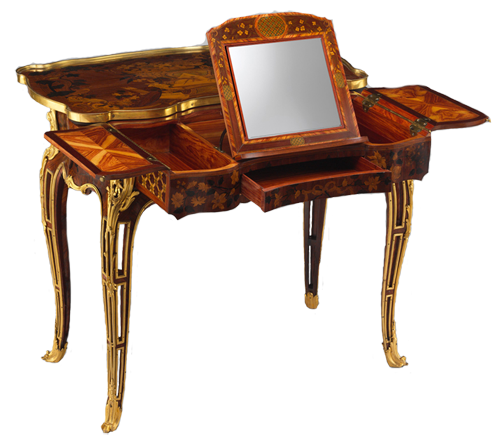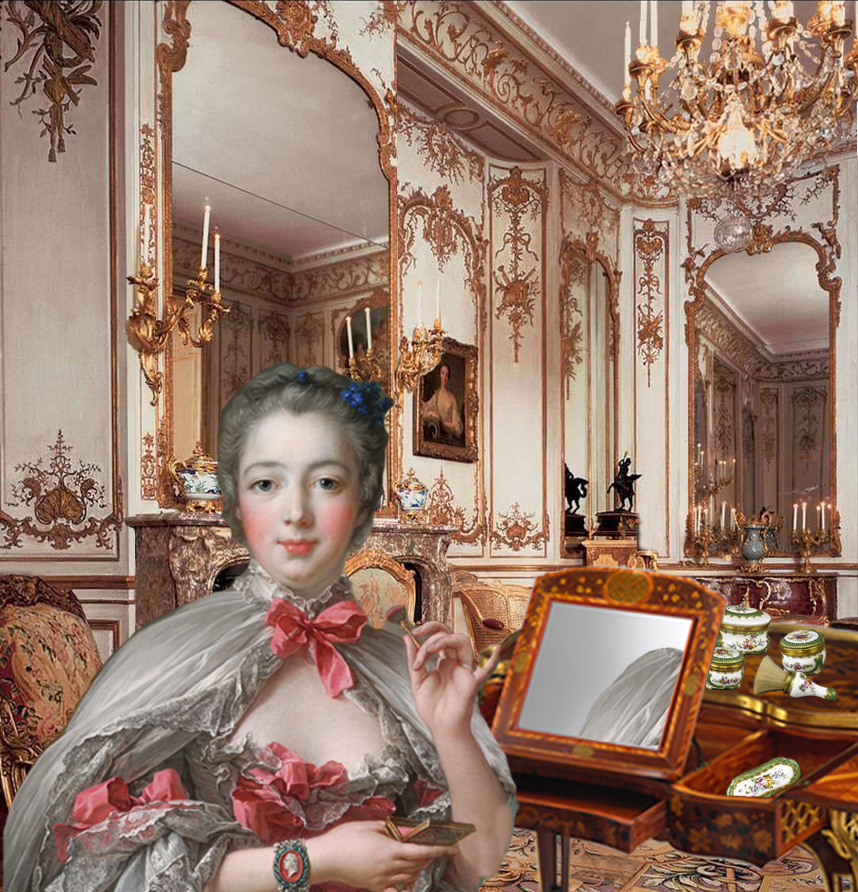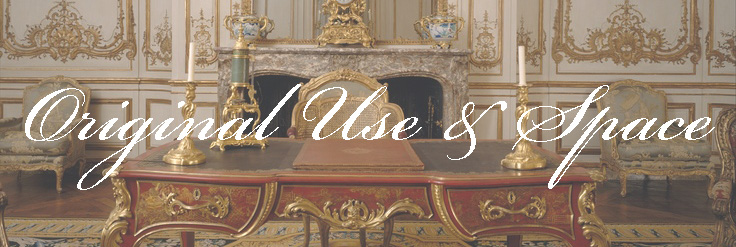
DRESSING TABLE

Annotated image of Jean-François Oeben and Roger Vandercruse, Mechanical Table, ca. 1761–63. Oak veneered with mahogany, kingwood, and tulipwood, with marquetry of mahogany, rosewood, holly, and various other woods; gilt-bronze mounts; imitation Japanese lacquer; replaced silk. Dimensions: 27 1/2 × 32 1/4 × 18 3/8 in. (69.9 × 81.9 × 46.7 cm). The Metropolitan Museum of Art, The Jack and Belle Linsky Collection, 1982. Accession Number 1982.60.6. Background removed and mirror inserted into frame. Annotated image by Eugenie Pron.

Composite image of François Boucher, Jeanne-Antoinette Poisson, Marquise de Pompadour, ca. 1750 at the Jean-François Oeben, Mechanical Table, ca. 1761–63, re-imagined for toilette use with a mirror, all displayed in the re-sized Varengeville Room. Metropolitan Museum of Art. Some pieces from a Manufacture de Sèvres, Toilet Service, ca. 1763 are displayed on the table to show how the table might have appeared in use. Both the Oeben mechanical table and the Sèvres service de toilette are thought to have been intended for use by Madame de Pompadour. Re-sized Varengeville room by Alex Bass. Composite image by Eugenie Pron.
Part of the thrill of the dressing table’s many hidden compartments was being able to reveal one’s service de toilette. This curated assortment of containers and tools would structure the spectacle of grooming that ensued. While most people’s’ service de toilette would have been made of varnished wood, Madame de Pompadour would have had hers made of the finest materials and crafts–silver or soft paste porcelain from the Manufacture de Sèvres. A strandard service de toilette was comprised of two powder boxes, two rouge boxes, two patch boxes, and a vergette brush and container.

Annotated image of two toilette services in different mediums: Etienne Pollet, Toilette Service of the Duchesse de Cadaval, ca. 1738-1739. Silver. Detroit Institute of Arts, Elizabeth Parke Firestone Collection of Early French Silver Fund, 1952. Accession Number: 53.177. Manufacture de Sèvres, Toilet Service , ca. 1763. Soft paste porcelain, painted and gilded. The Wallace Collection, acquired by Sir Richard Wallace, 1872. Background removed. Annotated images by Eugenie Pron.
Other Uses of the Oeben Mechanical Table:
Pages
practice
